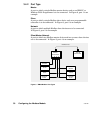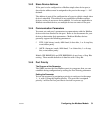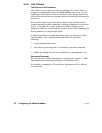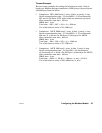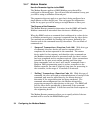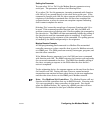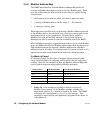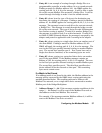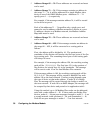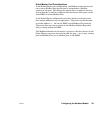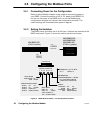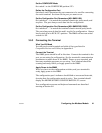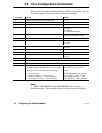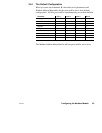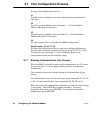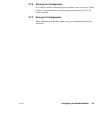
Configuring the Modbus Models
31007492
38
V Address Range 65 ... 70 These addresses are reserved and must
not be used.
V Address Range 71 ... 74 If the message contains an address in
the range 71 ... 74, it will be addressed to a single Modbus slave
device at one of the BM85 Modbus ports. Addresses 71 ... 74
specify ports 1 ... 4, respectively.
For example, if the message contains address 74, it will be routed
to the device at port 4.
Each of the addresses 71 ... 74 specifies only a single port, and
cannot be used to address a Modbus network of devices at a port.
To address a device on a Modbus network, the Modbus Address
Map table must be used.
V Address Range 75 ... 79 These addresses are reserved and must
not be used.
V Address Range 80 ... 255 If the message contains an address in
the range 80 ... 255, it will be converted to a routing path as
follows.
First, the address will be divided by 10. The quotient and
remainder of the division will become the first two bytes of the five
byte routing path. The remaining three bytes of the routing path
will always be zeros.
For example, if the message the address 150, the resulting routing
path will be: 15, 0, 0, 0, 0. The first byte (15) is the quotient of
the division; the second byte (0) is the remainder. The message
will be sent to node 15 on the local Modbus Plus network.
If the message address is 163, the resulting routing path will be:
16, 3, 0, 0, 0. The message will be routed to Modbus Plus node
address 16 on the local network. Further routing depends upon
the type of device at that node address. If node 16 is a Bridge
Plus, the message will be routed through the bridge to node 3 on
the next network. If node 16 is an SA85 Adapter, the message will
be accepted by that device and posted to its application task 3.
Using this method, up to 18 Modbus Plus nodes can be addressed,
each with a node address 8 ... 25. If these nodes are Bridge Plus
devices, nodes 8 ... 24 can pass messages through to nodes 1 ... 9 on
a second network (with quotients 8 ... 24, and remainders 1 ... 9).
Node 25 can pass messages to nodes 1 ... 5 on that network.



